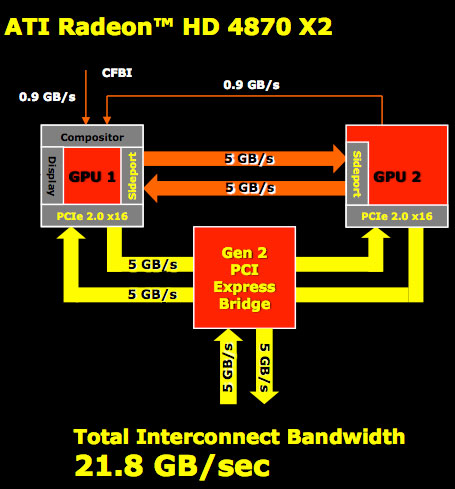Sound_Card
Regular
If RV790 is truly in the works, I don't expect to see RV870 till closer to April. Though I'm thinking RV790 is a bit more formidable then a OC to hold over.
Follow along with the video below to see how to install our site as a web app on your home screen.
Note: This feature may not be available in some browsers.


imagination!!
512bit Shared memory controller, 1600x2=3200 shaders, 80TMU's per GPU.
Power consumption > 500W?

512 bit memory interface. According to hardspell, which cites sources from the manufacturer, the memory will have a 150-160 GB/s bandwidth.http://www.driverheaven.net/ati-graphic-cards/174519-radeon-hd-5870-rv870.html
Why would heat be a problem?


Rectangular chips seem to be quite common, e.g. northbridge/chipsets and things like RV620:If the die sizes is kept constant, what gives more dies/wafer, square or a rectangular design. I suspect it is the square one. If yes, then I would suspect that they won't choose an MCM design, since they make mid-range stuff because there's money to be made here and they prioritize mid range chips over high end ones.

If the die sizes is kept constant, what gives more dies/wafer, square or a rectangular design. I suspect it is the square one. If yes, then I would suspect that they won't choose an MCM design, since they make mid-range stuff because there's money to be made here and they prioritize mid range chips over high end ones.
For the less informed what do those sideport chips do ?
Anand's Derek said:AMD made a huge deal out of making sure we knew about the CrossFire Sideport, promising that it meant something special for single-card, multi-GPU configurations. It also made sense that AMD would do something like this, after all the whole point of AMD's small-die strategy is to exploit the benefits of pairing multiple small GPUs. It's supposed to be more efficient than designing a single large GPU and if you're going to build your entire GPU strategy around it, you had better design your chips from the start to be used in multi-GPU environments - even more so than your competitors.
AMD wouldn't tell us much initially about the CrossFire Sideport other than it meant some very special things for CrossFire performance. We were intrigued but before we could ever get excited AMD let us know that its beloved Sideport didn't work. Here's how it would work if it were enabled:

